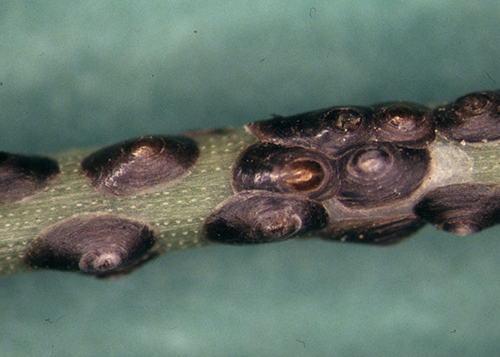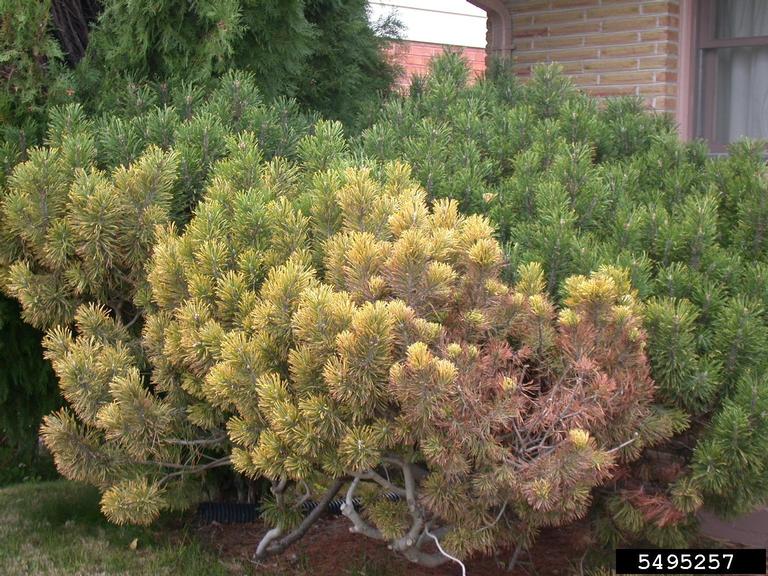Integrated Pest Management
Black Pineleaf Scale
Dynaspidiotus californica
Pest Description
- adults: 5/64 inch; gray to black oval shells
- immatures: crawlers (mobile stage) 3/64 inch; yellow orange; no wings
- immatures: nymphs (sessile stage) resemble adults, but are smaller
Host Plants, Diet & Damage
- pine (common on Austrian, Scotch, and mugo) and Douglas-fir
- feed on the sap from needles
- affected needles can be blotchy yellow
- thinning crowns with yellowing/browning needles
- presence of scales can also be unsightly if heavy
- serious infestations can cause needle drop or tree death
Biology, Life Cycle & Damaging Life Stage
- overwinter as immature scales
- mating occurs in June
- eggs are laid in late-June and early-July
- eggs are laid under the female scale
- crawlers are present from mid- to late-July
- crawlers blow to new locations via wind currents
- crawlers develop an outer shell and remain stationary
- one generation per year
- nymphs and adults are the damaging stages
IPM Recommendations
- Keep trees healthy and stress free.
- Monitor scale populations on pines.
- Monitor scale crawlers from early to mid-July using double sided tape wrapped around twigs.
- Apply horticultural oil to smother scales or scale crawlers when monitoring indicates crawlers are present.
- Apply a systemic dinotefuran soil drench, granules or bark band in June.
Imidacloprid is ineffective against hard scales.




